What is Machine Translation?
Machine Translation is when a computer program (software or website) automatically processes a text, translating it from one language to another without human involvement. The most widely known and accessible machine translation tool is, of course, Google Translate. However, in this article we’ll take a look at other professional software that aids human translation.
We’ll shed some light on the advantages and disadvantages of Machine Translation, explore the circumstances in which it can be a viable solution and look at how it can be integrated with the work of professional translators.
The history and development of Machine Translation
The vision of automatically translating texts dates back to the early ‘50s, though it wasn’t until the ‘80s that increased computing power and lower costs enabled the development of the first machine translation programs for PC, such as the Translation Support System adopted by IBM. Since then, machine translation technology has evolved, progressively using different methods to train programs to continuously translate more precisely and more quickly from one language to another. For instance, from rule-based machine translation to statistical machine translation to neural machine translation.
The Advantages of Machine Translation
- Speed: Machine Translation is unquestionably quicker than human translation as it can almost instantaneously process millions of words and translate huge amounts of information in real time.
- Number of languages: with Machine Translation, you usually have access to multiple languages simultaneously, going from one to another in seconds, and vice versa.
- Availability: being a computer program, it is basically available at all times.
- Affordability: if it’s a free program or if you already have access to professional software, Machine Translation can offer a cheaper solution.
The Disadvantages of Machine Translation
- Errors and inaccuracies: Machine Translation tools provide a very literal output and can often either alter the source text meaning or render it barely comprehensible. It can’t “read between the lines”, so it fails to capture nuanced meaning and figures of speech. In short, it often gets the wrong end of the stick. Take names, for example, like Andrea Orsi, which could come out as Andrew Bears rather than remaining, as it should, unchanged.
- Loss the coherence and terminology consistency:Machine Translation often doesn’t take the entire text into consideration. Instead, it processes the text sentence by sentence. That means that words are not contextualised and key words throughout a single document may be translated in different ways, posing a particularly serious problem in specialist texts such as patents, financial statements and manuals.
- Lack of transcreation: in advertising and marketing, where translation also involves requires an element of creativity (i.e., transcreation) in order to adapt campaigns and slogans to the target market, a literal translation simply will not suffice. The message, tone of voice and aims of the source text need to be taken into consideration, something machine translation tools are incapable of doing, for the time being. Human translation can still that something extra to the translated text, offering enhanced and unique results.
- Dependence on Big Data from unknown sources: all Machine Translation tools draw on Big Data from a specific field and from unknown sources that are not accessible to all operators in that field. As such, an Italian contract translated on one website could be perfectly pre-translated into English, but not Bulgarian, while that same site might translate a financial statement from Italian to English very poorly, white another Machine Translation site may translate it almost perfectly. It’s the luck of the draw, so you need to know how to navigate the different options.
- Lack of quality assurance: given the above reasons, Machine Translation alone cannot guarantee quality.
How and when to use Machine Translation
Machine Translation can be more practical and economical when you need to quickly get the gist of a text written in a language you don’t understand. In all other circumstances, personal or professional, which require accuracy, contextualisation and quality, relying solely on machine translation can be very risky in light of the issues outlined above. Machine translation is therefore always checked and revised by a professional translator.
Machine Translation and human translators: friends or foes?
The work of professional human translators has developed in parallel with technological innovations and software offered by Machine Translation. In our everyday translation activities, we make use of sophisticated tools to speed up our work, enabling us to preserve terminology and stylistic consistency and create so-called translation memories that can be reused to identify repetitions and partial matches within a text or between different versions of the same document. This method, where human translation is aided by software, is called Computer Assisted Translation (CAT), and, in any case, involves correcting, improving, post-editing and quality control for each text translated.
With extensive experience providing language services, Perenchio Translations makes use of the latest technology to meet all your translation and localisation needs with prompt, affordable and quality solutions.


